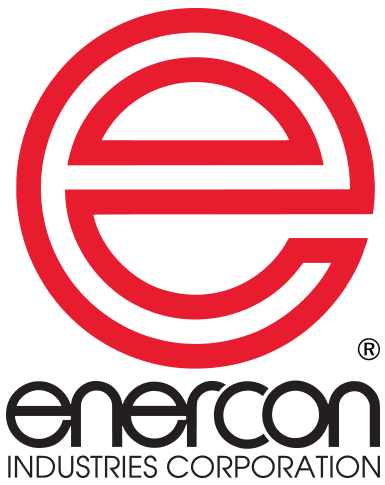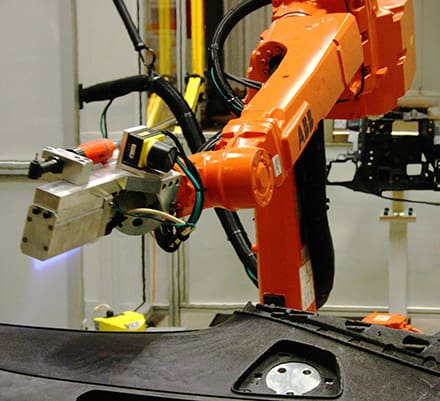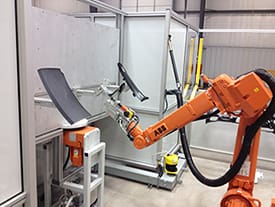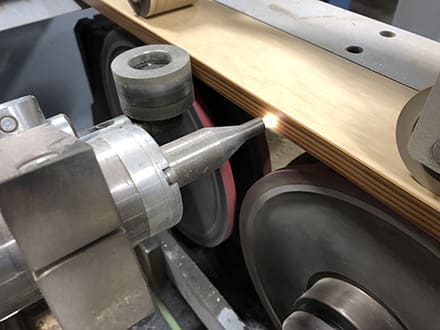Analysis of New Flame Treatment Technology for Surface Modification and Adhesion Promotion
ABSTRACT Surface treatment technologies are commonly used to enhance the adhesion potential of base flexible packaging substrates for the application of performance adhesives, coatings and inks. The relationship between ribbon burner flame treatment technology and enhanced velocity (EV) port burner technology, and the degree of surface modification for adhesion promotion, is compared. Results showed that…
Read MoreDyne Level Does Not Guarantee Surface Adhesion
Dyne levels are a great indicator of your chance for adhesion success. But dyne level does not guarantee adhesion. Let’s look at a few factors that affect adhesion results. These include coating and material compatibility, surface energy, process variables, material variables and ultimately bonding requirements such as entanglement. Coating (ink, adhesive, paint, etc…) and material…
Read MoreHow Flame Control Systems Optimize Treatment
Flame is the world’s original surface treater and is commonly used on extrusion coating lines, paperboard processing and foil cleaning applications. If you haven’t considered a flame treater in some time you will be surprised at today’s advanced combustion control options and new high velocity burners that deliver effective and repeatable treatment. Managing the chemistry…
Read MoreFlame Treatment Automotive Dashboard to Improve Paint Adhesion Video
Enercon’s Flame Series surface treater treats an EVA automotive dashboard prior to painting. Treatment raise surface energy to promote paint adhesion. The flame treater is integrated with a robot that executes a treatment pattern based on a program actuated by a bar code scan on the part.
Read MoreFlame Treatment of Automotive Dashboard Improves Foam Adhesion Video
Enercon partnered with Midwest Engineering to develop a production ready flame treatment system for an automotive dashboard supplier. The goal of the system is to increase the receptiveness of the EVA dashboard surface to an adhesive which will hold foam padding in place. Enercon’s flame treater is integrated with a robot for precise treatment patterns…
Read MoreRobotic Integration of Flame Treatment for Automotive Assembly Video
Enercon’s Flame treater is used by automotive manufacturers for a variety of applications such as bumpers, dashboards, consoles, glove boxes and air bags. The flame treater cleans the surface of contaminates to improve adhesion prior to applying an adhesive, paint or coating. For this project, Enercon’s Flame treater was integrated by MWES with an ABB robot. It…
Read MoreSurface Treating Lab Samples Frequently Asked Questions Video
This video explains how easy it is to have Enercon test samples in our surface treating laboratory. Atmospheric plasma and flame treatment technologies are used to help you determine which solution is best for your application. Lab testing is a free service offered by Enercon. Surface Treaters are widely used to clean, etch and functionalize…
Read MoreHow Plasma & Flame Surface Treating Works – Explainer Video
Sam is a Quality Engineer at Stick-It Inc. and he is having trouble with the adhesive bonding and printing of his manufactured parts. The adhesives won’t stick and the ink rubs off! He needs to find a solution quick and decides to call Enercon for help. Follow Sam through his journey of discovering how plasma…
Read MoreSauder Manufacturing Ensures Adhesion Consistency with Corona, Plasma & Flame Surface Treating
As Sr Research Scientist at Sauder Manufacturing in Archbold, OH John Beck has seen his share of production challenges. His first experience with surface treating took place in the 1980s when he was part of a team that needed to improve lamination adhesion. They invested in a 66” wide Enercon corona treater to increase the…
Read MorePlasma and Flame Laboratory Surface Analysis
The best way to test the success of surface treatment is to immediately perform the next step in your process after treatment. If field evaluation is not possible, surface treating laboratory trials may be conducted with Enercon’s application engineers. They will test experiments with various plasma and flame treating technologies to determine which may be best for…
Read More








